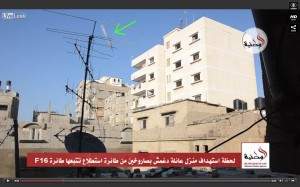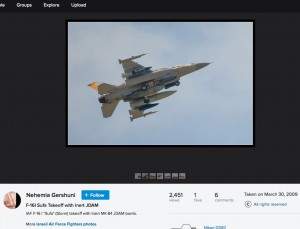What are inert bombs?
August 25, 2023 by Thomas Wictor
I’ve gotten several e-mails asking me, “What are inert bombs? You talk about them a lot, but what are they?”
Inert bombs are aerial munitions filled with wet sand or cement. They’re also called “dumb bombs.” Though they were originally designed for training, air forces began using them during wartime in order to reduce collateral damage. An inert bomb won’t explode, which means it can’t produce blast effects, and it can’t spray the area with lethal metal fragments.
Here are American airmen assembling inert 2000-lb BDU-56 joint direct attack munitions (JDAMs).
You can see the light-gray guidance kit of the JDAM, which turns an unguided bomb into a precision weapon that can hit within twenty-two feet (seven meters) of where aimed. In the hands of a skilled pilot, the accuracy is greatly increased. They can be launched 17 miles (27 km) from the target.
In the video above, note the steel nose cone, bolted-on tail fins, and brass suspension lugs. The light-gray tail fins are identifying features that can be seen in stills from videos taken in Gaza.
Here’s another.
This is an Israeli F-16 carrying one inert 2000-lb JDAM under the starboard wing, closer to the camera, and one unguided BDU-56 under the port wing.
The unguided explosive 2o00-lb bomb is called the Mk-84 (Mark 84), the guided version is called the GBU-31 (guided bomb unit 31), and the inert munition is the BDU-56 (bomb, dummy unit 56).
Inert cement bombs are very powerful.
It’s absolutely clear that the Israeli Air Force uses inert bombs when it strikes the homes of terrorists. You can tell because there’s no blast or fragmentation damage to the houses next door.
But what about when knocking down multistory buildings?
This is a GBU-12 Paveway II 500-lb bomb.
Note the fireball and tower of smoke.
Here’s an Israeli 2000-lb bomb being used on a house in Gaza. This munition is four times the size of the one above.
No fireball, and no giant tower of dirty-gray smoke, the telltale sign of the high-explosive Tritonal used in Israeli bombs.
The orange smoke could be powdered earth, or it could be smoke from ammonium nitrate/fuel oil (ANFO) explosives that were stored in the house.
It’s clear that the bomb was inert. An explosive 2000-lb JDAM would’ve killed the cameraman, since that weapon has a lethal fragmentation radius of 400 yards (366 meters).
A list of US weapons sold to Israel on June 1, 2004.
5,000 Joint Direct Attack Munitions (JDAM) tail kits (which include 2,500 GBU-31 for MK-84, 500 GBU-31 for BLU-109, 500 GBU-32 for MK-83, and 1,500 GBU-30 for MK-82 bombs); 2,500 MK-84 live bombs; 1,500 MK-82 live bombs; 500 BLU-109 live bombs; 500 MK-83 live bombs; 40 MK-84 inert bombs; 40 MK-82 inert bombs; 40 BLU-109 inert bombs; 40 MK-83 inert bombs; 4,500 DSU-33B/B live fuze components; 4,500 FMU-139B/B live fuze components; and 500 FMU-143B/B live fuze components.
The BLU-109 (bomb, live unit 109) is a “bunker buster” that weighs 1927 pounds (874 kg). It has a specially hardened nose and a thick steel casing so that it can cut through six feet (1.8 meters) of concrete. The explosive version is fitted with a time-delay fuse that allows the weapon to explode after it’s penetrated the target.
Although Israel possesses live and inert BLU-109 bunker busters, I don’t think these weapons are being used in the current war. For one thing the inert bombs shown hitting houses and apartment buildings are extremely large. The 2000-lb BDU-56 is 12.75 feet (3.89 meters) long, while the BLU-109 is only eight feet (2.4 meters) long.
Also, I imagine that the weapons caches are not very far under the buildings. The deeper your weapons are buried, the further you have to carry them to the surface.
So what about the extreme precision of the Israeli strikes? How can they knock down only one building without damaging any others?
These strikes all seem to follow exactly the same pattern: The bomb hits the front of the building or in front of it, and the structure collapses completely. It’s clear that these “apartment blocks” are targeted because they’re Hamas installations. Is the damage caused by inert bombs setting off weapons caches inside?
From the video above, here’s the bomb coming in, aimed at a particular spot.
I managed to capture it even closer to the impact.
The fireball goes out to the side rather than in the direction from which the bomb came.
Does that mean the Israelis hit an explosives cache, or did they use an explosive aerial munition? The size of the weapon indicates that it’s a 2000-lb bomb, but the explosion is far too small for that munition. There’s also nowhere near enough dirty-gray smoke.
These are 2000-lb JDAMs. Note the size of the fireballs and mushroom clouds in comparison to the buildings.
The video we see of Israeli 2000-lb bombs collapsing buildings in Gaza would seem to show inert munitions detonating explosives inside the structures. A live 2000-lb bomb causes a massive explosion. The damage we see in these videos is simply too light for the 2000-lb bomb, yet the size of the munition identifies it as such a weapon. A mystery!
How can the IDF locate a weapons cache inside a building? Well, they could have human intelligence (humint), or they could be using drones equipped with synthetic aperture radar (SAR). Israel’s true military capabilities are almost inconceivably advanced; with SAR, the insides of buildings and underground structures can be mapped in three dimensions.
The only thing I can say with absolute certainty is that the IDF is NOT using explosive 2000-lb bombs to take down individual buildings. That would be excessive force, and the videos prove that the IDF practices incredible restraint.
In this video we see secondary explosions caused by weapons inside the building. There’s no doubt.
There are three separate explosions, even though only one 2000-lb bomb was dropped.
As large as the explosions are, they would’ve been even bigger if this were a GBU-31. These have to be inert bombs. They’re not doing enough damage, they’re not making big enough fireballs, and they’re not creating enough smoke to be live.
I’d love to know the Israeli secret of how to knock down a single building, but it’s best that they keep it to themselves.
This article viewed 14722 times.










